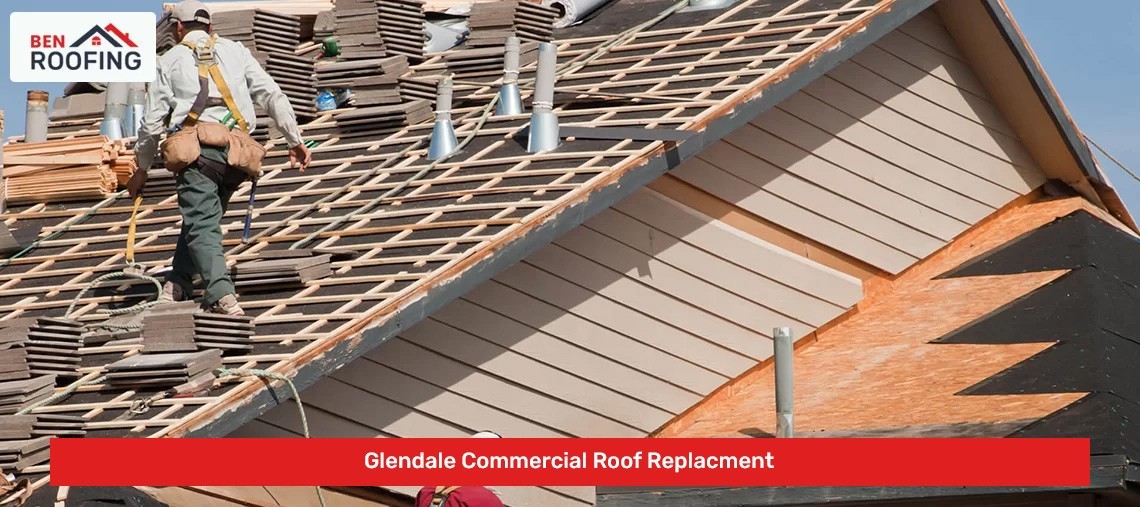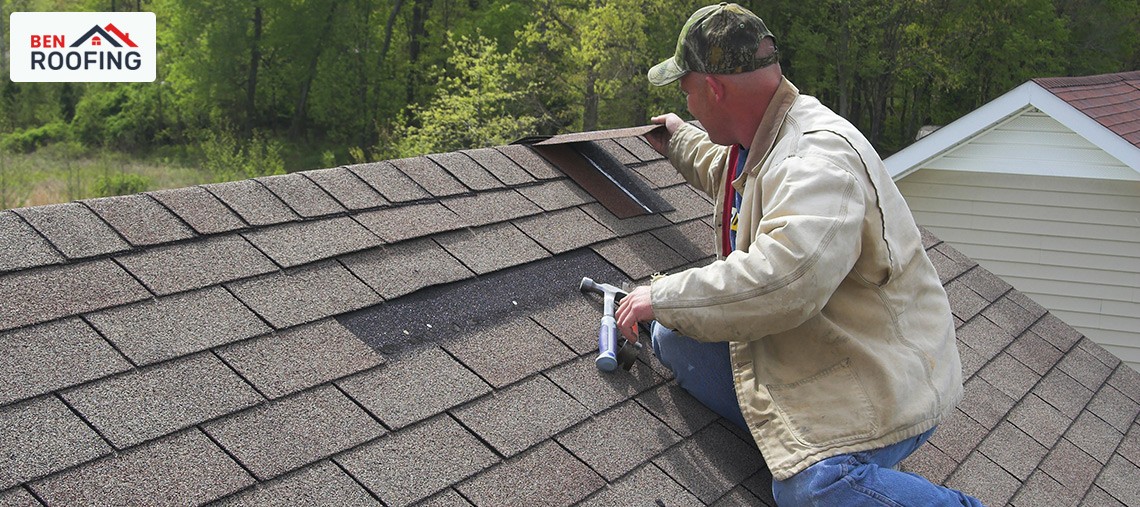Here are the different types of Glendale commercial roof replacement

During Glendale commercial roof replacement, several structural components may need replacement depending on their condition and the requirements of the new roofing system. Here are some common structural components that might be replaced
The roof membrane is the outermost layer of the roofing system and provides waterproofing and protection. It is typically made of materials like single-ply membranes (such as EPDM, PVC, or TPO) or multiple layers of built-up roofing (BUR). The roof membrane is often replaced during a roof replacement to ensure a fresh, durable, and watertight surface.
Flashing refers to the metal strips or sheets used to seal and protect vulnerable areas of the roof, such as roof edges, penetrations (such as vents or pipes), and transitions (where different roof sections meet). Damaged or corroded flashing is commonly replaced during roof replacement to maintain the integrity of the roofing system and prevent leaks.
The roof deck is the structural base that supports the roofing system. If the roof decking is damaged, weakened, or deteriorated, it may need to be replaced to ensure a stable foundation for the new roof. Common roof decking materials include plywood, metal panels, or concrete.
In some cases, if the existing roof trusses or rafters are damaged, compromised, or inadequate to support the new roof system, they may require replacement or reinforcement. This ensures the structural integrity and safety of the building.
Proper drainage is essential to prevent water pooling and ensure efficient water runoff from the roof. During a roof replacement, the drainage systems, including gutters, downspouts, and scuppers, may be upgraded or replaced to improve water management and prevent water damage
Here’s a table outlining different types of commercial buildings and the ideal options for Glendale roof replacement based on usual considerations. Please note that this table provides general guidance, and it’s important to consult with our team for specific recommendations based on your building’s unique characteristics and requirements.
| Commercial Building Type | Ideal Roof Replacement Options |
| Office Buildings | – Single-ply membranes (EPDM, PVC, or TPO) – Built-up roofing (BUR) – Roof coatings for existing roofs in good condition |
| Retail Stores | – Single-ply membranes (EPDM, PVC, or TPO) – Metal roofing for durability and aesthetic appeal – Reroofing or roof recovery for roofs in good condition |
| Industrial Facilities | – Metal roofing (standing seam or corrugated) – Built-up roofing (BUR) for heavy-duty applications – Solar panel integration for energy generation |
| Warehouses | – Metal roofing (standing seam or corrugated) – Built-up roofing (BUR) for heavy-duty applications – Roof coatings for existing roofs in good condition |
| Hospitality Buildings | – Single-ply membranes (EPDM, PVC, or TPO) – Green roofs for environmental benefits – Reroofing or roof recover for roofs in good condition |
The ideal time for Glendale commercial roof replacement can depend on various factors such as the condition of the existing roof, weather patterns, and personal preferences However, there are a few general considerations to keep in mind when determining the right time for commercial roof replacement in Glendale:

Roof Condition: If your roof is showing signs of significant damage, such as leaks, missing shingles, or extensive wear and tear, it’s likely time for a replacement. Ignoring severe roof issues can lead to further damage and costly repairs, so addressing them promptly is essential.
Weather and Season: Glendale experiences a warm Mediterranean climate, with hot summers and mild winters. Therefore, it’s generally preferable to schedule roof replacement during the cooler months, such as spring or fall, when temperatures are more moderate. Extreme heat or rainstorms can impact the installation process and affect the performance of the new roof.
The duration of a commercial roof replacement depends on various factors, including the size and complexity of the roof, weather conditions, and the chosen roofing system. It can range from a few days to several weeks. Your roofing contractor will provide an estimated timeline specific to your project.
There are various roofing materials suitable for commercial applications, such as single-ply membranes (EPDM, PVC, TPO), built-up roofing (BUR), metal roofing (standing seam, corrugated), modified bitumen, and roof coatings. The choice depends on factors like budget, building requirements, and local regulations.
The cost of commercial roof replacement depends on factors like roof size, complexity, chosen materials, insulation needs, and any additional requirements.
In many cases, it is not necessary to close your business during roof replacement. However, there may be some noise, odors, and disruption during the process.